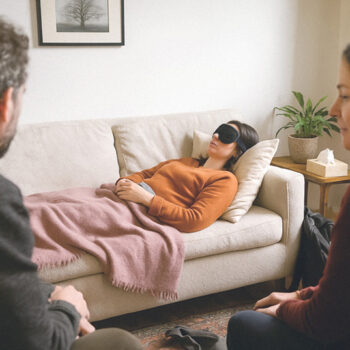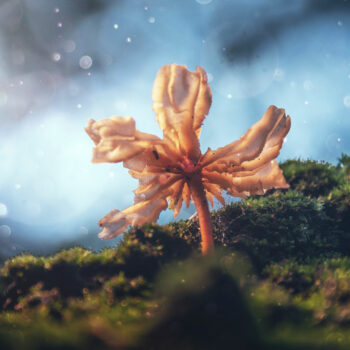Hallucinogenic Mushrooms: What Are They?
Hallucinogenic mushrooms possess incredible properties. Long used in shamanic rituals, they are now being studied for their effects on mental health. An overview of their psychedelic powers.
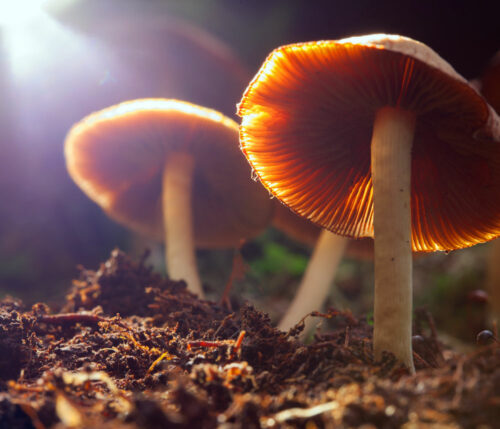
Mushrooms That Grow Everywhere
They grow in damp undergrowth, on manure heaps, or hidden in the grass, concealed from those unaware of their power… Visually, hallucinogenic mushrooms are indistinguishable from their non-psychedelic counterparts. Yet, their effects and their impact on human consciousness are immense.
Their organism has adapted to most environments. For millennia, they have been found all over the planet: from the European plains to the forests of South America and the humid climates of Southeast Asia.
Varieties of Psychedelic Mushrooms
There are many kinds of psychoactive mushrooms. But two are especially well-known.
- Psilocybes, also called “magic mushrooms”, are the most famous. They are rich in psilocybin – a molecule capable of unlocking the mind’s gateways to an imaginary world. It works by affecting serotonin receptors.
- Amanita muscaria,is the red mushroom with white spots. You might see it in the forest. It works differently in the brain and can cause strange and unexpected effects.
For humans, these fungi have long been a source of fascination. But also fantasy, fear, and desire. This is understandable. For centuries, shamans used them to explore other worlds, even if no one understood how they worked. Later, in the 1960s and 70s, hippies used them to discover new feelings and states of mind.
Today, however, interest in them extends far beyond mycologists and mystics. Psychedelic hallucinations are now explored not only for their potential to awaken spiritual insight. But also for their impact on mental health. Scientists are working to understand their effects, active compounds, and the potential risks and benefits they entail.
Anatomy of Mushrooms
Before diving into their effects, here is an overview of their anatomy:
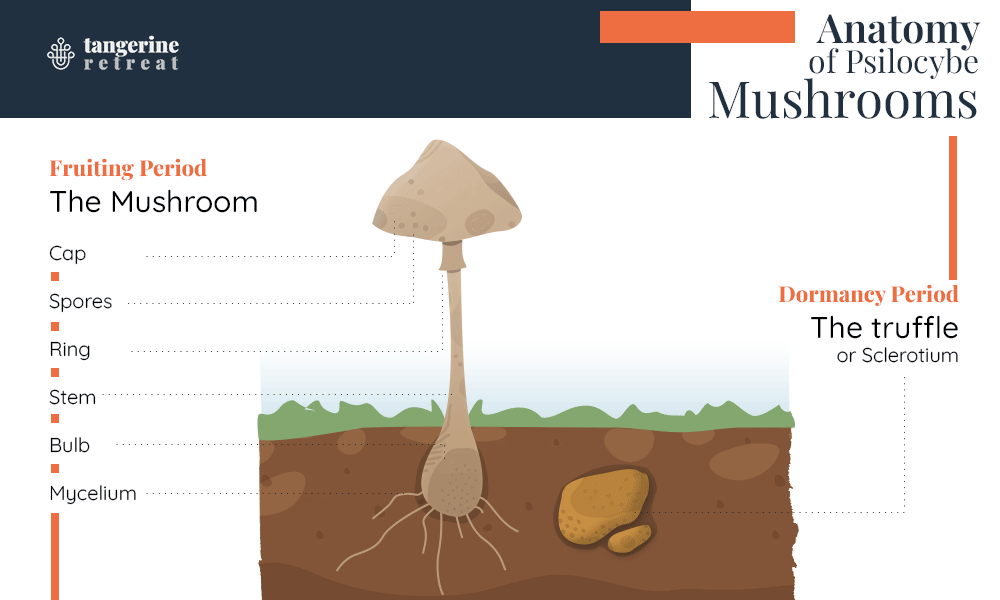
The Psychological Effects of Magic Mushrooms: An Inner Journey
A Unique Experience
Taking a hallucinogenic mushroom is like stepping into a mental theater where reality shifts, transforms, and becomes symbolic. Visual or auditory hallucinations are common. Colours can seem brighter. Sounds can feel different. Time may feel faster or slower. It’s hard to describe. Every journey is different because everyone has a unique mind.
In the right setting, one might witness fantastical scenes, relive intense memories, or feel the warmth of a loved one. Some say they talk to the mushroom. They feel it has emotions, like a character in a play. Forgiving, understanding, condemning, engaging, withdrawing, resonating, releasing…
A Transformative Effect
Some people feel a deep inner journey. They feel calm and connected to the universe. Others go through hard moments. The ego can disappear, like a dream fading away… before returning to a peaceful state, as if freed from a burden.
According to testimonies, this is one of the most significant experiences in the lives of those who have tried it (90%). One may emerge enriched, groggy, unsettled, or energized. In truth, all reactions are possible. But above all, they invite self-reflection and deeper self-awareness.
What matters most is the situation: where you are and how you feel. Set and setting determine both the quality of the psychedelic journey and the insights that can be gained—especially for those considering psychotherapy after the trip.
Physiological Effects: Beyond the Mind
When the Body Follows the Mind
When the mind takes flight and begins to wander, the body responds in its own quiet language.
Dilated pupils, shivers, a slight increase in heart rate and blood pressure. Nothing particularly dramatic. The physical signs of psilocybin and psilocin are subtle — fluctuating between deep calm and gentle restlessness.
To avoid unexpected reactions, it’s generally advised not to overstimulate the body:
- Limit stimulants such as coffee and tea ;
- Avoid alcohol for a few days beforehand ;
- Reduce carbohydrate intake ;
- Get a good night’s sleep before the psilocybin ceremony.
Shortly after ingesting it, a mild nausea may arise at the start of the trip. This usually gives way to a floating, almost mystical sensation. Even staunch skeptics report feeling something inexplicable—and often find it amusing. It is a unique moment when the brain takes us beyond what we thought we knew about it. The nervous system runs freely, but only for a limited time.
Magic truffles produce the same effects, though their lighter dosage prevents an overly rapid onset and facilitates a smoother landing. With truffles, nausea is far less common.
And What About Addiction?
When discussing psychoactive substances, addiction often comes to mind. However, this type of mushroom do not cause dependence. Whether one takes psilocybin once, twice, or more, the body does not develop a craving for more. There is no withdrawal effect.
Unlike tobacco, alcohol, or cocaine, psilocybes do not interact with the brain’s dopamine receptors. There is no reward sensation—therefore, no addiction.
There are even studies exploring how they might help combat gambling addiction or alcoholism.
How to Consume Hallucinogenic Mushrooms?
Safety First
A psychedelic journey holds great promise but also some risks… Improvisation is best avoided. One must be fully informed about the implications.
To consume mind-altering mushrooms safely, here are six basic rules:
- Check for contraindications: Psychosis, antidepressants, untreated hypertension, allergies, etc.
- Dose cautiously: Rely on an experienced person to determine the appropriate dosage.
- Choose a safe environment: A calm place with no injury risks, no outside disturbances, and in a country where consumption is legal.
- Prepare properly: Stay positive, relax, talk, and set aside stressful topics.
- Surround yourself with trusted people: Have reliable, attentive individuals present before, during, and after the experience.
- Avoid mixing substances: No alcohol or other psychoactive drugs (cannabis, etc.).
Set and Setting
These rules define set and setting—the mindset and context of consumption. This might seem trivial, but these parameters play a crucial role. Taking psychedelic mushrooms without respecting these principles can lead to a destabilizing journey.
A conscious, informed, and respectful approach is essential. In an unsuitable environment, side effects like paranoia, anxiety, or a bad trip can occur. Professional environments such as psychedelic retreats or assisted therapy offer controlled settings.
Buying Hallucinogenic Mushrooms
The sale of mushrooms is regulated in many countries. In the Netherlands, purchasing psilocybin truffles is legal. In Amsterdam, there are stores selling them in nearly every neighborhood. Buying them only requires being of legal age. However, exporting them to a country where they are illegal is strictly forbidden.
In contrast, buying psilocybin in United Kingdom is illegal in all forms—fresh, dried, or as a grow kit. Even purchasing hallucinogenic mushrooms online from a Dutch website, where it is legal, remains prohibited. However, if the substance is legal in a country, attending a psilocybin retreat or assisted therapy is generally allowed.
Moreover, buying Psilocybes is not like buying carrots—freshness, production methods, and dosage are critical factors in ensuring safety. Hallucinogenic truffles sold in smartshops have the advantage of consistent dosing.
Consuming Psychedelic Mushrooms
Taking Psilocybes requires proper dosing. It is common to seek guidance from a mentor or facilitator to determine the right amount of psilocybin for the situation. Experienced individuals can also help choose the appropriate type of product.
Mushrooms can be ground and infused in water heated to 70°C, with a bit of lemon. This method is simple and effective—the mixture is ready to drink after 10 minutes.
A variation of this preparation, known as Lemon Tek, involves soaking the mushrooms in lemon juice for 20 to 30 minutes. The citric acid begins to break down the molecules. Enthusiasts believe this process can accelerate the onset of the psychedelic experience and produce more intense sensations.
Once again, dosage is critical—one should never take mushrooms blindly.
Long-Term Effects: Risks and Benefits
A reassuring fact is that they have been used by humans for centuries. The Aztecs called them teonanácatl, the “flesh of the gods.” Yet, much about them remains unknown.
But what lingers after a psychedelic trip? For some, a lasting shift in their perception of the world—greater openness, a new perspective on the ego, or a renewed sense of creativity.
Because of this, their therapeutic potential intrigues neuroscientists and psychiatrists. Modern research is investigating their effects on treatment-resistant depression, obsessive-compulsive disorder, and post-traumatic stress disorder, with promising results. However, caution is necessary. The human psyche is a fertile yet fragile terrain. For modern psychonauts, the journey is just beginning.
Where Do They Grow?
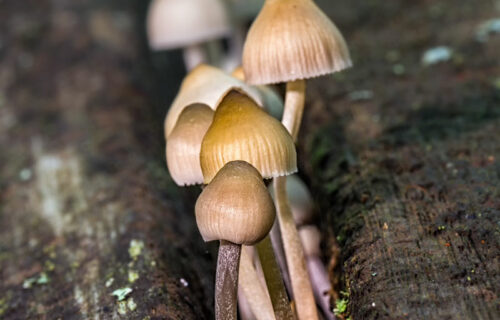
Fungi have adapted to a wide variety of environments. As a result, they can be found almost everywhere, though they each have preferred habitats:
| Variety | Location | Habitat |
|---|---|---|
| Psilocybe mexicana | Mexico and Central America | Humid meadows and soils rich in organic matter |
| Psilocybe semilanceata | Europe, Asia, New Zealand, North America | Damp grasslands, pastures, and soil enriched with organic matter |
| Psilocybe cyanescens | North America, Australia | Decaying wood, particularly in parks, gardens, and damp wooded areas |
| Psilocybe cubensis | Central and South America, Southeast Asia, Australia | Coprophilic—grows in the dung of herbivorous animals |
FAQ
They are unlikely to spark new culinary trends. Their taste is mild, slightly acrid, and earthy. It’s not exactly unpleasant, but few people find pleasure in eating them.
When talking about medicinal mushrooms, people usually think of lion’s mane, turkey tail, chaga, reishi, or oyster mushrooms. Psilocybes are a controlled substance, and their potential therapeutic effects are not yet universally recognized. But, some studies are exploring their potential effect as a treatment for depression.
A truffle (sclerotium) is the dormant, underground part of the mushroom (fungus). It serves as a storage unit for nutrients, helping the organism survive harsh seasons like summer and winter. When conditions are favorable, the mushroom grows back from its sclerotium.
All parts of a magic mushroom contain the same amount of psilocybin—cap, spores, mycelium, or bulb. The sclerotium has a lower concentration, making it easier to control its effects.
It depends on the country. In United Kinkdom, for example, they are classified as narcotics under the Public Health Code. The law states that possession, use, cultivation, transportation, and foraging of psychedelic drug are subject to criminal penalties. This is why seeking legal frameworks is essential.
You can’t completely switch them off, but you can soften their impact. The best approach is to change rooms and talk about simple, everyday things with a sober person. Work, family, hobbies — ordinary topics like these help ground you in reality and ease you out of the trance-like state.
Last updated on 3 April 2025

